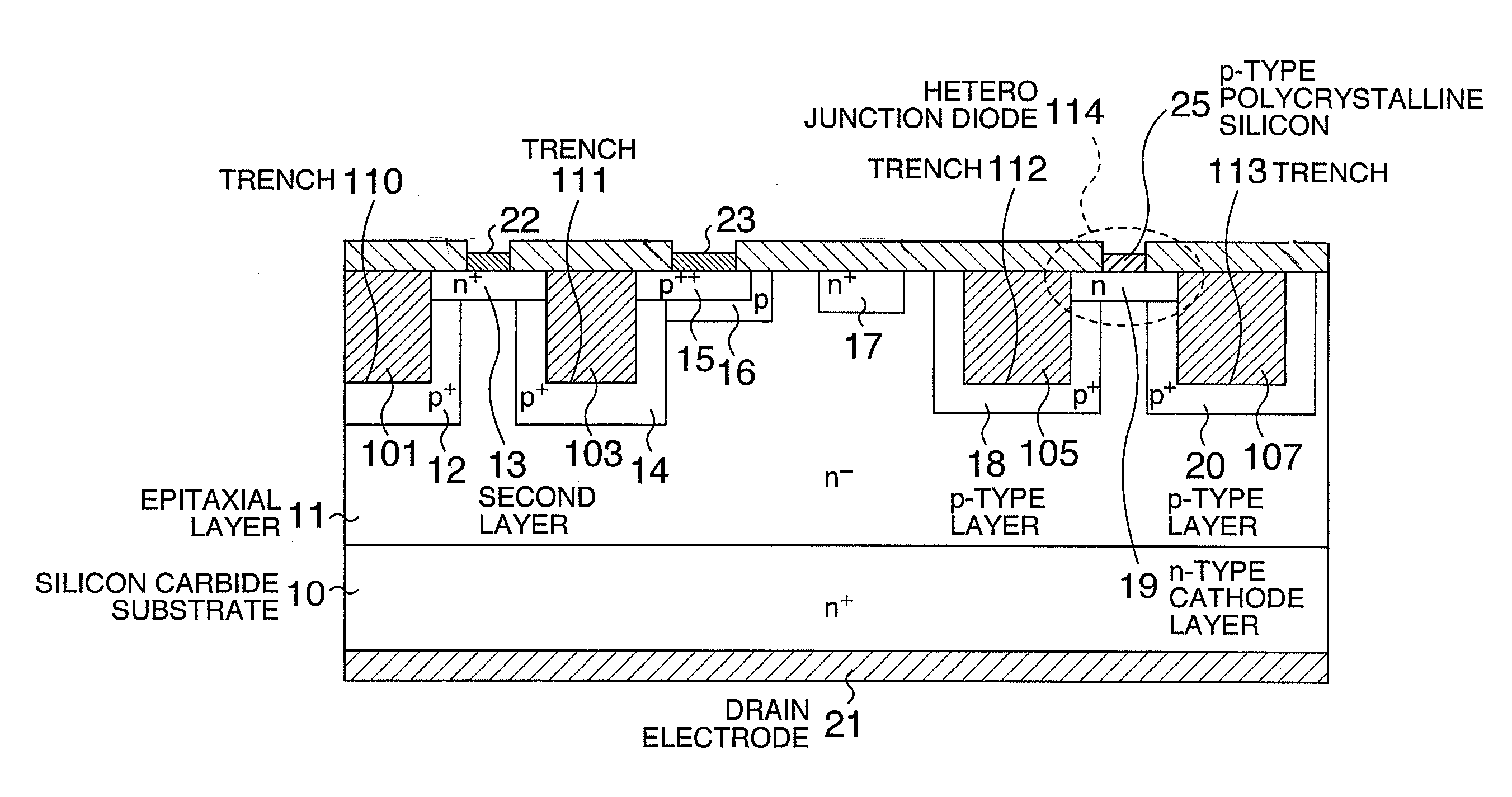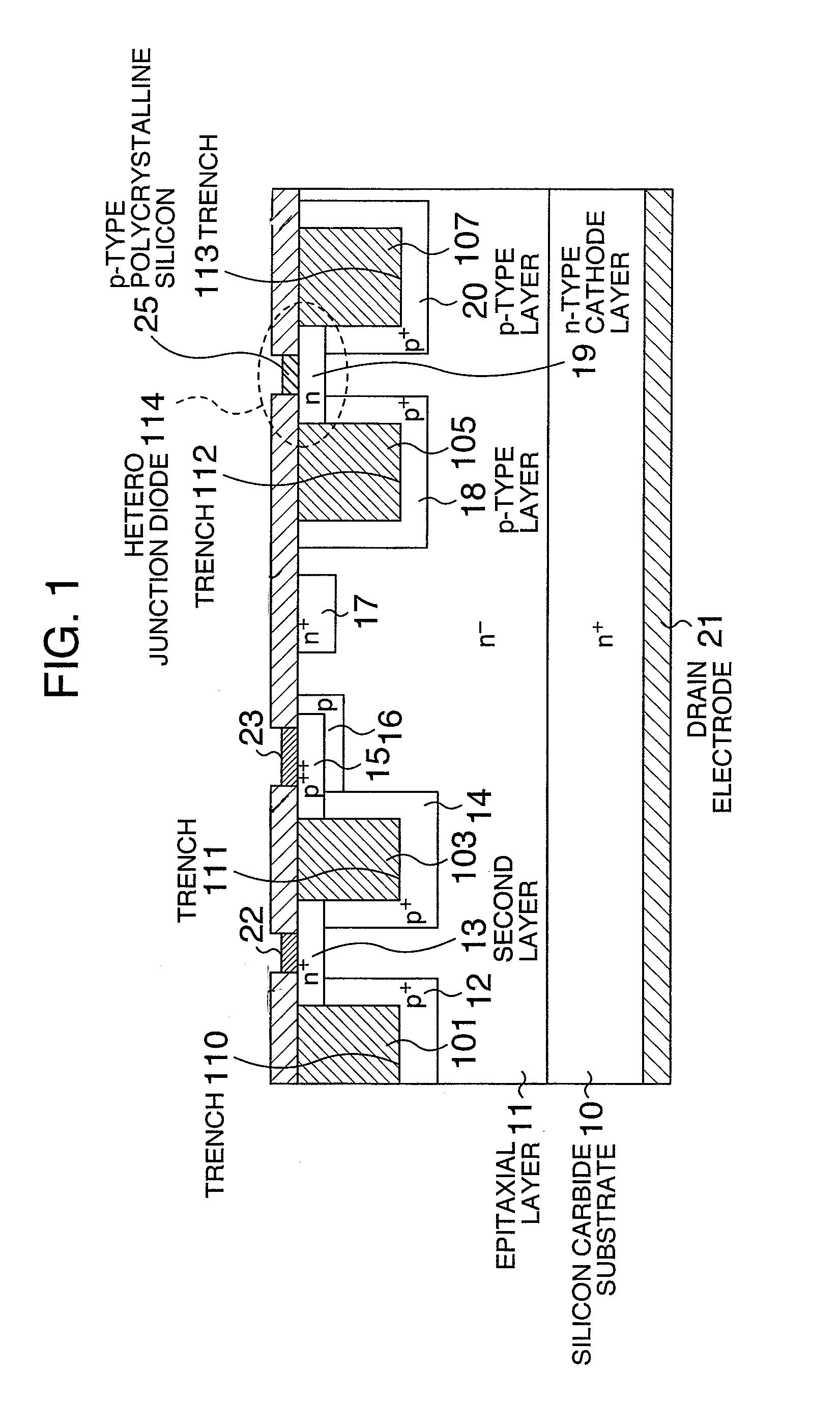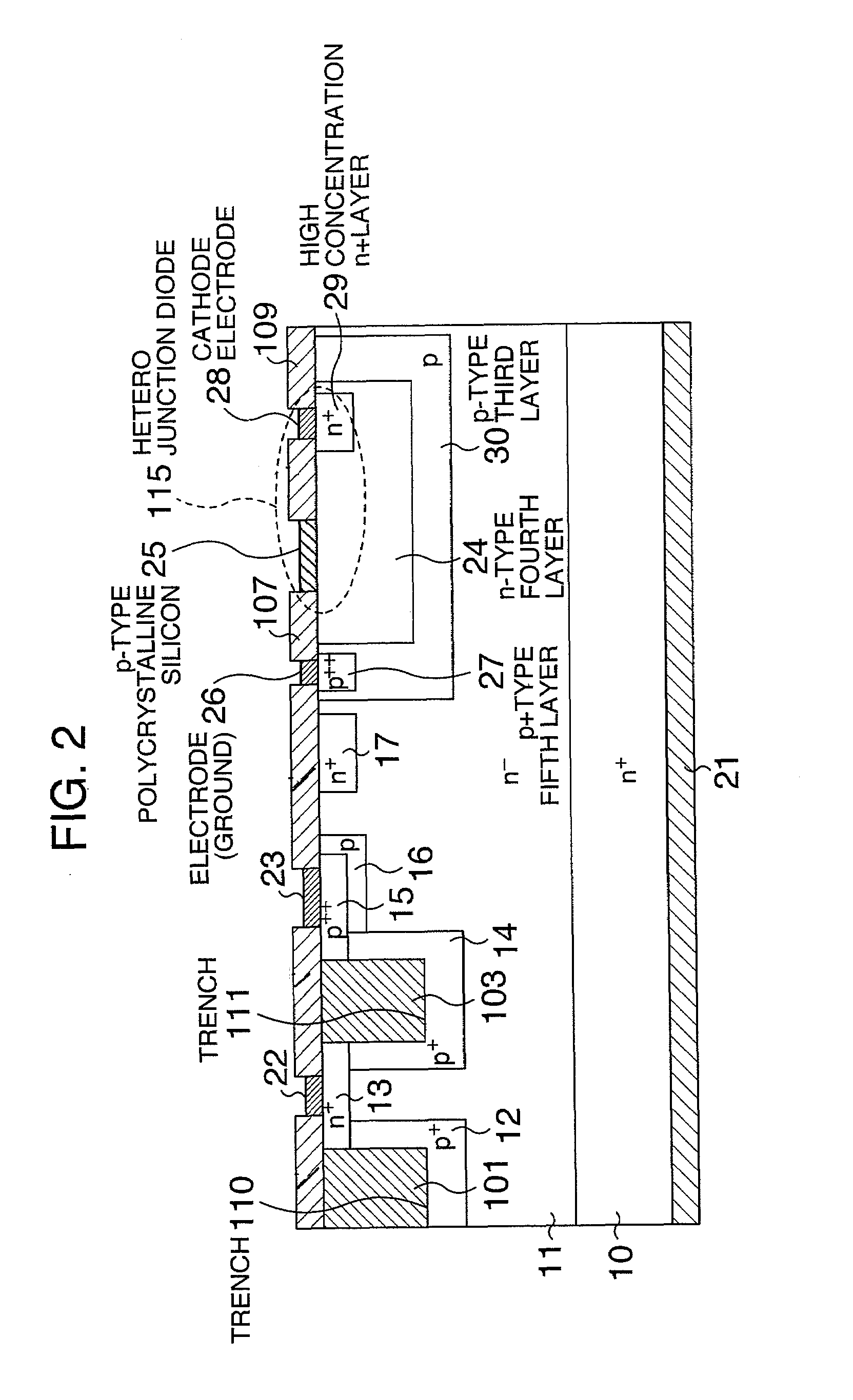Semiconductor device including a vertical field effect transistor, having trenches, and a diode
a vertical field effect transistor and diode technology, applied in the field of semiconductor devices, can solve the problems that the diode formed of polycrystalline silicon cannot operate in a high temperature environment, the field effect transistor using silicon carbide cannot be applied to any high temperature environment, and cannot be used as the temperature sensor
- Summary
- Abstract
- Description
- Claims
- Application Information
AI Technical Summary
Benefits of technology
Problems solved by technology
Method used
Image
Examples
first embodiment
[0036]FIG. 1 is a longitudinal section view of a semiconductor device according to the present invention. A silicon carbide semiconductor substrate having a band gap of at least 2.0 eV includes a semiconductor substrate 10 of a first conductivity type n (or p), and an epitaxial layer 11 of the same first conductivity type n (or p) adjacent to the first layer 10, successively from a first surface side thereof (bottom of FIG. 1). Hereafter, the first conductivity type n (or p) is simply referred to as n-type and the second conductivity type p (or n) is simply referred to as p-type.
[0037]Deep trenches 110 and 111 are formed from a second surface side (top side in FIG. 1). These trenches are filled with insulation films 101 and 103, respectively. There are p-type control regions 12 and 14 along side walls of the trenches 110 and 111, respectively. There is a source region 13 along the second surface of a region sandwiched between the two adjacent trenches 110 and 111. A static induction...
second embodiment
[0042]FIG. 2 is a longitudinal section view of a semiconductor device according to the present invention. There are trenches 110 and 111 on silicon carbide having an n-type semiconductor substrate 10 and an n-type epitaxial layer 11. The trenches 110 and 111 are filled with insulation films 101 and 103, respectively. There are p-type control regions 12 and 14 respectively along side walls of the trenches 110 and 111. There is a source region 13 along the second surface of a region sandwiched between the two adjacent trenches 110 and 111. A static induction transistor including a drain electrode 21, a source electrode 22 and a gate electrode 23 is thus constituted. A p-type layer 16 is a p-type control layer field limiting portion, and an n-type layer 17 is a punch-through stopper layer. The configuration heretofore described is the same as that in FIG. 1. Hereafter, the same portions as those in FIG. 1 are denoted by like reference numerals, and duplicated description will be avoide...
third embodiment
[0048]FIG. 3 is a longitudinal section view of a semiconductor device according to the present invention. Hereafter, the same portions as those in FIG. 1 are denoted by like reference numerals, and duplicated description will be avoided. Only different configurations will be described. The semiconductor device includes an n-type cathode layer 19 in a region sandwiched between the two adjacent trenches 112 and 113. The semiconductor device includes a p-type anode layer 32 inside the n-type cathode layer 19, and an anode electrode 31 in ohmic contact with the p-type anode layer 32. The p-type anode layer 32 and the anode electrode 31 serve as an anode portion and its electrode of a p-n junction diode 116. In the depth direction shown in FIG. 3, the p-type anode layer 32 and the anode electrode 31 do not exist in as far as the deepest portion. In the deepest portion, a cathode electrode (not illustrated) of the p-n junction diode 116 is formed in ohmic contact with the n-type cathode l...
PUM
 Login to View More
Login to View More Abstract
Description
Claims
Application Information
 Login to View More
Login to View More - R&D
- Intellectual Property
- Life Sciences
- Materials
- Tech Scout
- Unparalleled Data Quality
- Higher Quality Content
- 60% Fewer Hallucinations
Browse by: Latest US Patents, China's latest patents, Technical Efficacy Thesaurus, Application Domain, Technology Topic, Popular Technical Reports.
© 2025 PatSnap. All rights reserved.Legal|Privacy policy|Modern Slavery Act Transparency Statement|Sitemap|About US| Contact US: help@patsnap.com



